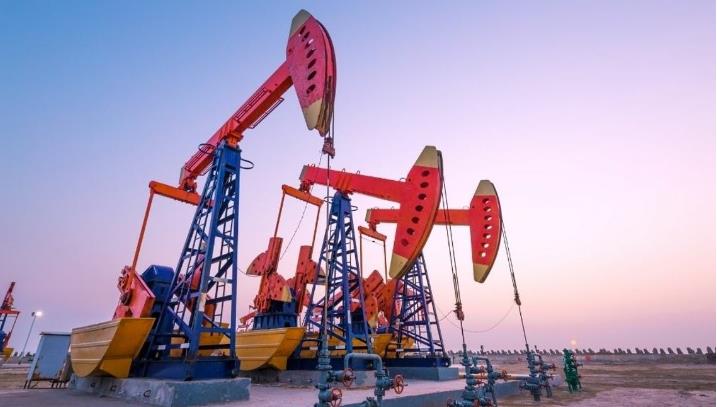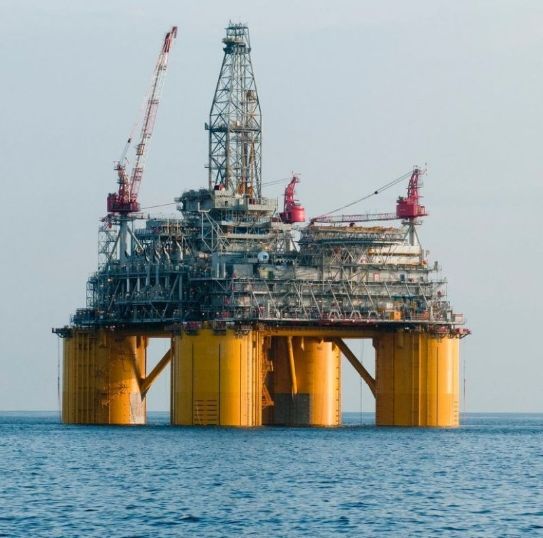Oil and gas exploration and extraction serve as crucial pillars of the global energy landscape, catering to a significant portion of the world's energy demands. These operations primarily involve onshore drilling, conducted on land, and offshore drilling, which occurs beneath bodies of water. While both methods contribute to meeting energy needs, they also present unique challenges and environmental considerations. This article delves into the operational disparities between onshore and offshore oil and gas activities, highlighting their respective benefits and drawbacks, along with environmental impacts.

Understanding Onshore Oil and Gas Drilling:
Onshore oil and gas drilling, also known as land-based drilling, involves extracting hydrocarbon resources from land-based reservoirs. It serves as a cornerstone of the global energy economy, meeting substantial energy requirements. Key aspects of onshore drilling include:
Exploration and Drilling: Onshore drilling commences with geological assessments and seismic surveys to identify potential oil and gas reserves. Drilling rigs are then deployed on land to access these reserves, utilizing various techniques ranging from traditional vertical wells to advanced horizontal drilling.
Access and Infrastructure: Onshore drilling sites are typically more accessible than offshore locations, facilitating easier transportation of equipment, personnel, and supplies. This accessibility reduces logistical challenges and financial burdens associated with remote offshore drilling.
Environmental Impact: Onshore drilling can significantly impact surrounding ecosystems, leading to land disturbances, habitat damage, and contamination of soil and groundwater. However, stringent regulatory oversight and responsible drilling practices can mitigate these effects.
Community Impact: Onshore drilling often occurs in populated areas, resulting in potential conflicts with local communities due to noise, traffic, and environmental concerns. Effective community engagement and adherence to environmental standards are essential for addressing these challenges.
Production Costs: Generally, onshore drilling is more cost-effective than offshore drilling due to proximity to infrastructure and markets. Reduced transportation costs make it an attractive option for oil and gas companies, particularly in regions with readily accessible deposits.
Exploring Offshore Oil and Gas Drilling:
Offshore oil and gas drilling involves extracting hydrocarbon resources from beneath the seabed, typically in oceanic or marine environments. Key aspects of offshore drilling include:

Marine Environment: Offshore drilling presents unique challenges compared to onshore operations, given the dynamic nature of marine environments characterized by tides, waves, and storms.
Technological Complexity: Offshore drilling requires specialized equipment and infrastructure, particularly for deepwater drilling, necessitating advanced technologies to access reserves located far beneath the seabed.
Environmental Impact: Offshore drilling carries environmental risks, including oil spills, habitat disruption, and harm to marine life. However, stringent safety measures and regulations aim to minimize these risks and safeguard marine ecosystems.
Energy Security: Offshore drilling targets extensive reserves located offshore, contributing to energy security by accessing previously untapped resources and diversifying energy sources.
Economic Benefits: Offshore drilling stimulates local economies by generating employment opportunities and revenue. Additionally, it reduces the need for long-distance transportation of oil and gas, enhancing economic efficiency.
Balancing Energy Needs and Environmental Concerns:
Choosing between onshore and offshore oil and gas operations involves a comprehensive assessment of various factors, including:
Resource Assessment:
Conduct a thorough evaluation of available oil and gas reserves, considering their size, depth, and proximity to the coast. This assessment forms the basis for determining the potential yield and feasibility of both onshore and offshore drilling.
Environmental Impact Assessment:
Assess the environmental consequences associated with both onshore and offshore operations. Evaluate factors such as habitat disturbance, water contamination, greenhouse gas emissions, and the risk of oil spills. Understanding these impacts is crucial for minimizing ecological harm.
Technological Feasibility:
Evaluate the technological feasibility of onshore and offshore drilling options. Consider the availability of advanced drilling technologies, safety measures like Blowout Preventers (BOPs), and environmental protection measures. Cutting-edge innovations such as portable drilling well control simulation systems and top drive simulators can enhance operational safety and efficiency.

Economic Analysis:
Conduct a comprehensive cost-benefit analysis to compare the economic viability of onshore and offshore drilling. Assess factors such as production costs, transportation expenses, and potential revenue generation. This analysis provides insights into the financial implications of each option.
Energy Security:
Evaluate the impact of both onshore and offshore drilling on energy security. Determine whether offshore drilling offers access to untapped resources or if onshore drilling can meet immediate energy needs more efficiently. Consider diversification strategies to enhance energy resilience.
Regulatory Framework:
Understand the regulatory framework governing onshore and offshore drilling in the region of interest. Ensure compliance with environmental and safety regulations to mitigate risks and liabilities associated with non-compliance.
Community Engagement:
Engage with local communities and stakeholders to understand their concerns and preferences regarding onshore and offshore drilling. Addressing community feedback and involving stakeholders in the decision-making process fosters support and promotes transparency.
Risk Mitigation:
Identify potential hazards associated with both onshore and offshore operations and devise effective risk mitigation strategies. Develop emergency response plans, implement spill containment techniques, and employ measures to mitigate environmental damage.
Technology and Innovation:
Explore technological and innovative opportunities to minimize the environmental impact of oil and gas operations. Investigate advancements in drilling technology, renewable energy integration, and carbon capture and storage to promote sustainability and reduce carbon emissions.
Energy Transition Considerations:
Align the chosen drilling option with broader energy transition goals towards cleaner and more sustainable energy sources. Assess how each alternative contributes to reducing carbon emissions and advancing environmental sustainability.
Long-Term Sustainability:
Evaluate the long-term viability of onshore and offshore drilling options, considering factors such as resource depletion and the shift towards alternative energy sources. Ensure alignment with sustainability objectives to avoid stranded assets and promote long-term resilience.
Public Perception and Acceptance:
Assess public perception and acceptance of both onshore and offshore drilling activities. Consider the social license to operate and potential reputational impacts on companies. Transparency and engagement with stakeholders are essential for maintaining public trust.
Future Expansion and Flexibility:
Evaluate the scalability and adaptability of the chosen drilling option to meet future market conditions and energy demands. Assess whether the selected option allows for future expansion and flexibility in response to changing industry dynamics.
Renewable Energy Opportunities:
Explore opportunities for diversifying operations into renewable energy sources, such as offshore wind or solar power. This diversification aligns with sustainability goals and reduces the environmental impact of oil and gas operations.
Decision and Monitoring:
Make an informed decision based on a comprehensive assessment of all factors outlined above. Implement robust monitoring and reporting systems to track environmental performance and ensure compliance with regulations. Continuous monitoring enables ongoing improvement and adjustment of practices to minimize environmental impact and enhance sustainability.
Conclusion:
Onshore and offshore oil and gas operations are indispensable for meeting global energy demands, each presenting distinct advantages and challenges. To strike a balance between energy requirements and environmental sustainability, adopting responsible practices, stringent regulation, and transitioning towards greener energy sources are imperative. The ability to address these challenges and steer the industry towards a more sustainable path will define the future of oil and gas development.

